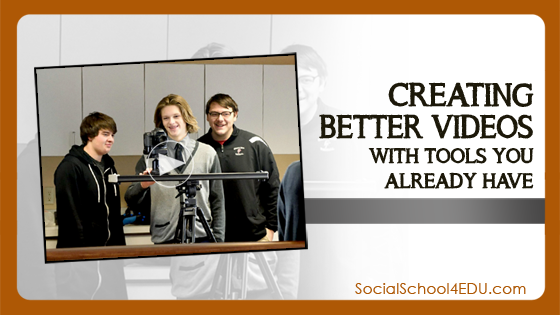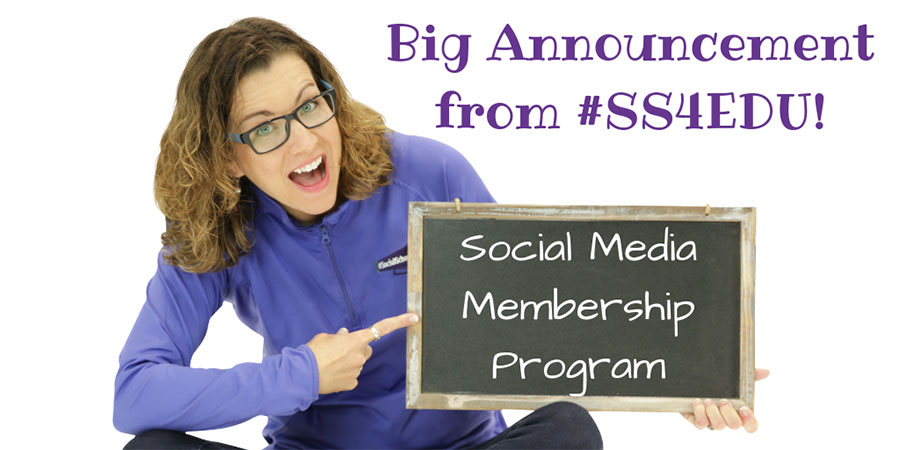Most people working in schools have little experience in professionally shooting and editing video. However, they are being called on more often to create video content for websites, social media, and newsletters.
Why? Because video works for telling stories!
- The brain processes visuals 60,000 times faster than text.
- Video accounts for 52% of all mobile traffic, and will grow 14 times by 2018.
- 79% of all internet traffic will be video by 2018. (Source: Cisco Visual Networking Index)
 I’m not a video expert, so how can I provide guidance on this topic? Easy! I reached out to friend and business owner Jake Sturgis, APR. He is the owner of Captivate Media & Consulting located in Eden Prairie, MN. One cool little fact — he started his business the same exact month I started mine, in January of 2014.
I’m not a video expert, so how can I provide guidance on this topic? Easy! I reached out to friend and business owner Jake Sturgis, APR. He is the owner of Captivate Media & Consulting located in Eden Prairie, MN. One cool little fact — he started his business the same exact month I started mine, in January of 2014.
Jake has over 12 years of direct experience working for public schools in a communications role. His team specializes in telling stories for schools. He has a lot of knowledge to share. Let’s look at the tips he can provide for you:
-
- Have a Plan – Hollywood directors don’t let the cameras start rolling without a plan. Neither should you. What are you trying to communicate? Who is the audience? How are you planning to distribute the video? If Facebook is the main distribution channel, be sure to keep it under 60 seconds and think about ways you can incorporate graphics to communicate to the 85% of people who watch videos without the sound on.
- Keep it Steady – Grab a tripod, or make the world your tripod by finding a table, chair or a sleeping cat to help balance your shot. Seriously, you may think you can hold the camera pretty steady, but it’s tough, especially if you are trying to record for more than 30 seconds at a time. There are light, portable and inexpensive tripods that will help you take your videos to the next level and allow your viewers to not experience motion sickness.

- Forget the Zoom – Most phones and tablets can shoot really good video. However, the zoom feature on most of these devices is digital, so when you zoom in, you get pixels! Your video will look extra grainy and it is harder to keep a steady shot when you are zoomed in on something. My advice is to zoom like your grandpa did back in the day…with your feet! Move closer to the action and you’ll get better quality shots and better sounding audio.
- Record Great Audio – You can shoot the best video in the world, but if you are outside and there is a nest of birds chirping right next to the person you are interviewing, your message will get lost. There is not a good way to easily edit background noise out of an interview. Invest in a microphone or make sure you are really close to the sound you want to record. Take a listen before you start recording; if you can hear it with your ears, the microphone will pick up the same noise. Bad audio equals bad video.
- Limit Special Effects – Just because your editing program has 100 different video effects doesn’t mean you need to use them all. Keep the focus on your message; don’t distract your audience with cheesy effects. A standard cut or cross dissolve between two pieces of video should be used most frequently. If you use an effect, there should be a reason, like a “clock wipe” being used to show the passage of time.
Jake actually has a total of 12 tips to help you get your Steven Spielberg on. That full list can be accessed in a recorded webinar that is available to members only. If you are interested in joining us, learn more here!
This webinar will give you the information and confidence you need to start creating professional-looking videos for your district. Learn the elements of a great video story, how to compose shots, record high-quality audio, edit quickly and professionally, and use social media to increase viewership.



